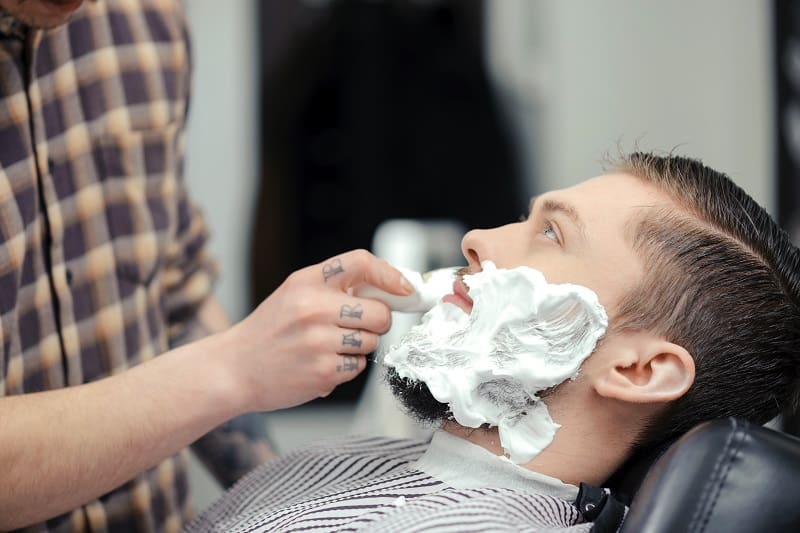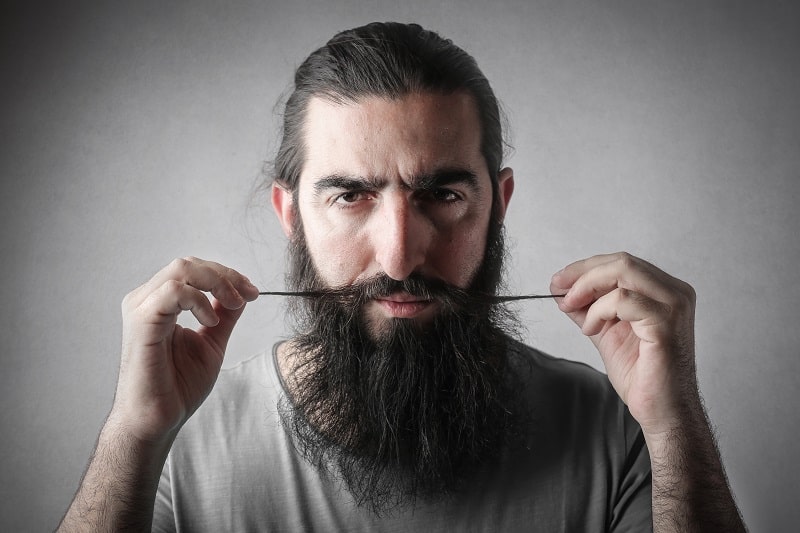
The original look: A full beard style with lengthy facial hair that goes beyond the chin area to form two separate sections split right in the middle. If you’re wondering where the name comes from, it’s surprisingly simple. On original French forks you’d commonly find two prongs.
17. Friendly Mutton Chops
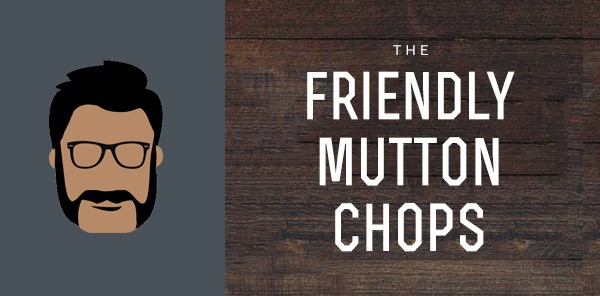

The original look: Long sideburns paired with a connecting mustache. Vertical sideburns are defined by the bottom of the jawline an corners of the mouth, while the chin itself is cleanly shaven. For variations this beard type can feature either thick or trimmed and narrow widths. A common misconception is confusing the Mutton Chops for the Friendly Mutton chops, however, the key difference to understand is one features the addition of a mustache, the other does not.
18. Full Beard
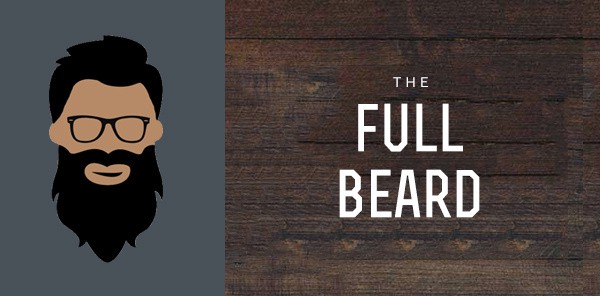
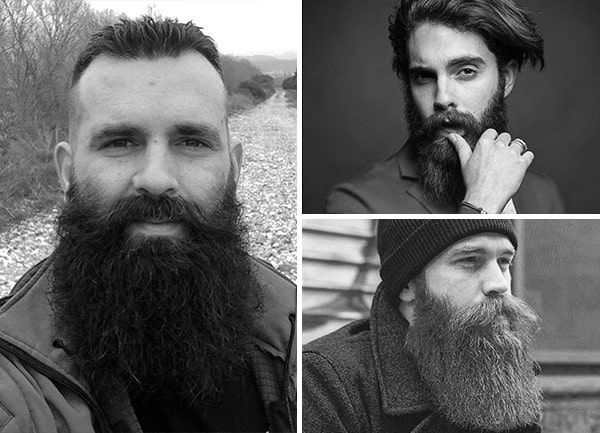
The original look: The full beard, aka one of the most popular facial hair styles. Call it the king of all beards if you like, in reality, it truly is. Whiskers of the moustache blend into the beard to cover the chins, cheeks and jawline with pure manliness.
While the style might seem simple to clean shaven men, that’s from far the from the truth. The full beard takes a considerable dedication to growth, serious grooming and trimming, and a keen eye for cleanliness while eating and drinking.
Think you know everything about growing this style, you’ll be surprised! Here’s everything I learned after putting down the razor: How to grow a beard.
19. Fu Manchu
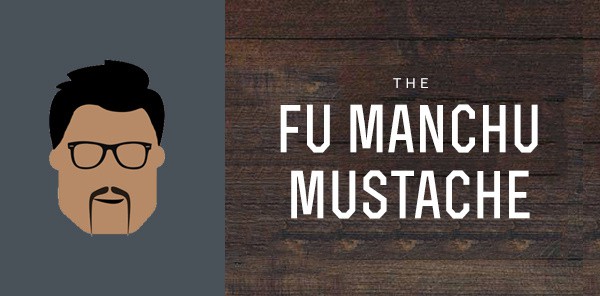
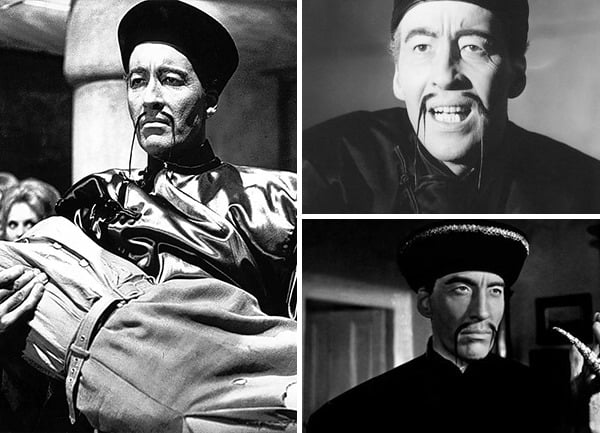
The original look: The Fu Manchu features a straight mustache which begins at the corners of the mouth. Facial hair extends downwards beyond the chin and lips (clean shaven) to form two equal “tendrils”. The lengthy whiskers are to have pointy ends that extend past the bottom of the chin.
While similar to the horseshoe, a key difference lies in the fact that the corners of the mouth (past 2cm) are shaven. It’s a good reason why the Fu Manchu is without question, a more grooming-intensive style to master. Perhaps you’ve heard the saying, “You probably don’t know anybody who has a Fu Manchu.” Aside from the classic, one common variation includes adding an additional tendril from a small patch of facial hair below the chin.
RELATED BEST 10 ON AMAZON:
| IMAGE | TITLE | TRENDS | SEE MORE |
|---|
 | Cremo Beard Oil, Revitalizing Cedar Forest, 1 fl oz - Restore Natural Moisture and Soften Your Beard To Help Relieve Beard... | 25359.8 | MORE VIEW |
|---|
 | Wahl Micro Groomsman Personal Pen Trimmer & Detailer for Hygienic Grooming with Rinseable, Interchangeable Heads for Eyebr... | 137735 | MORE VIEW |
|---|
 | Blackbeard for Men Formula X Instant Mustache, Beard, Eyebrow and Sideburns Color - Fast, Easy, Men’s Grooming, Beard Dye ... | 11738.3 | MORE VIEW |
|---|
 | Men's Beard Shaping Tool With Inbuilt Comb Transparent Template Styling Comb Templates for Goatee Mustache Sideburns, Jaw ... | 4544 | MORE VIEW |
|---|
 | Finishing Touch Flawless Women's Painless Hair Remover , White/Rose Gold | 539840 | MORE VIEW |
|---|
 | Baxter of California Comb | 3802.3 | MORE VIEW |
|---|
 | Wahl Beard Creme for Softening, Moisturizing, & Conditioning Facial Hair - Essential Oils for Men’s Grooming with Manuka O... | 16526.4 | MORE VIEW |
|---|
 | Braun Series XT5 – Beard Trimmer, Shaver and Electric Razor for Men, Body Grooming Kit for Manscaping, Durable One Blade, ... | 2176 | MORE VIEW |
|---|
 | Schick Hydro Silk Touch-Up Multipurpose Exfoliating Dermaplaning Tool, Eyebrow Razor, and Facial Razor with Precision Cove... | 730710 | MORE VIEW |
|---|
 | Sponsored Ad - Philips Norelco Multigroomer All-in-One Trimmer Series 3000, 13 Piece Mens Grooming Kit, for Beard, Face, N... | 588960 | MORE VIEW |
|---|
 | Finishing Touch Flawless Women's Painless Hair Remover , White/Rose Gold | 539840 | MORE VIEW |
|---|
 | Philips Norelco OneBlade Hybrid Electric Trimmer and Shaver, Frustration Free Packaging, QP2520/90 | 337451 | MORE VIEW |
|---|
 | Philips Norelco Multigroomer All-in-One Trimmer Series 7000, 23 Piece Mens Grooming Kit, Trimmer for Beard, Head, Body, an... | 256841 | MORE VIEW |
|---|
 | Sponsored Ad - Pefei Tweezers Set - Professional Stainless Steel Tweezers for Eyebrows - Great Precision for Facial Hair, ... | 211734 | MORE VIEW |
|---|
 | Wahl Micro Groomsman Personal Pen Trimmer & Detailer for Hygienic Grooming with Rinseable, Interchangeable Heads for Eyebr... | 137735 | MORE VIEW |
|---|
 | Sponsored Ad - Waxing Kit Wax Warmer Hair Removal with Hard Wax Beans for sensitive skin. KoluaWax Multiple Formulas Targe... | 122258 | MORE VIEW |
|---|
 | Arkam Beard Straightener for Men -Premium Heated Beard Brush Kit w/ Anti-Scald Feature, Dual Action Hair Comb and Hard She... | 79204.4 | MORE VIEW |
|---|
 | Hatteker Mens Hair Clipper Beard Trimmer Grooming kit Hair Trimmer Mustache Trimmer Body Groomer Trimmer for Nose Ear Faci... | 56570.8 | MORE VIEW |
|---|
Tips: "Amazon, Amazon Prime, the Amazon logo and Amazon Prime logo are trademarks of Amazon.com, Inc. or its affiliates". AS AN AMAZON ASSOCIATE, WE EARN AFFILIATE COMMISSIONS FROM QUALIFYING PURCHASES.

























